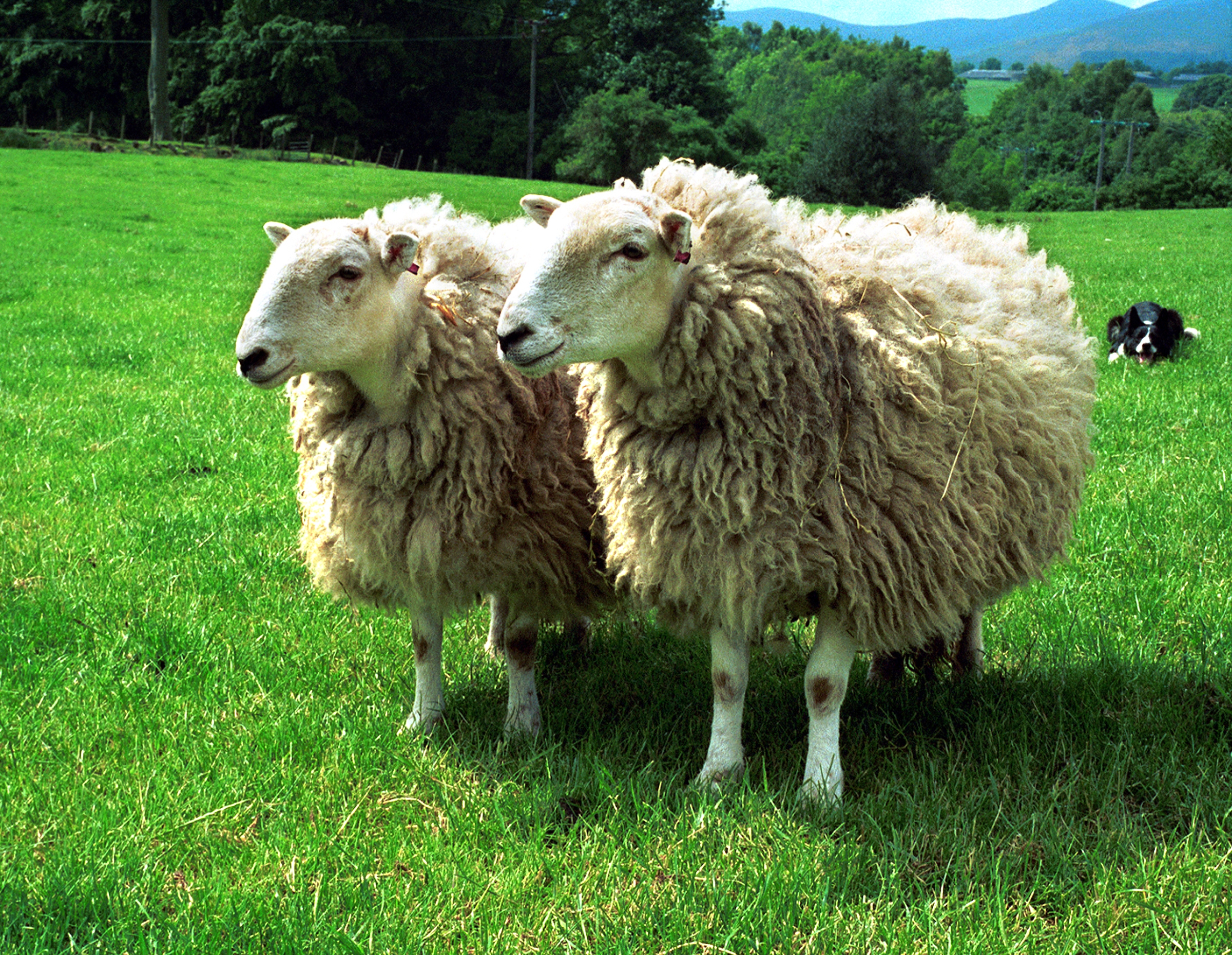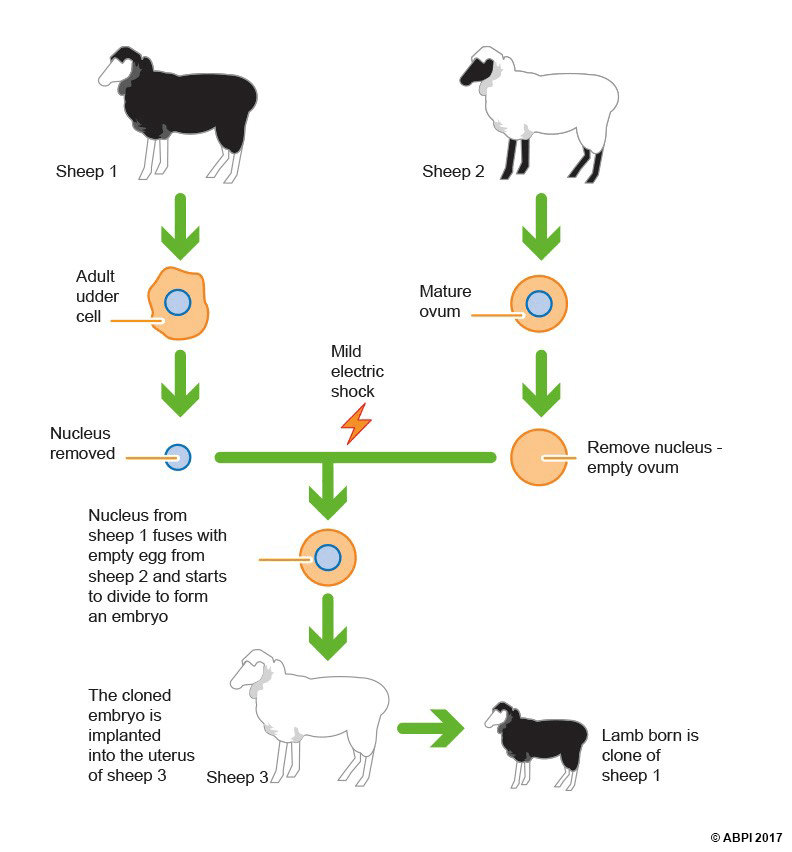This topic takes on average 55 minutes to read.
There are a number of interactive features in this resource:
 Biology
Biology
 PSHE / Citizenship studies
PSHE / Citizenship studies
Cloning can be a confusing term, as people often use it to mean different things. Some people use cloning to refer only to the production of a fully-grown genetically identical copy of a pre-existing adult. Others also include the generation of a fully-grown genetic copy of an embryo, or the artificial creation of twins.
As well as creating a genetically identical organism, cloning can also refer to the creation of a group of cells in a lab which are genetically identical to a person. This technique is used to create new medical treatments so it is known as therapeutic or biomedical cloning, but it also uses, and is sometimes known as, stem cell technology. Finally, cloning can also be used to refer to the generation of copies of a section of DNA – a process often used in genetic engineering known as molecular cloning or DNA cloning.
This process covers reproductive cloning of both somatic (fully differentiated) and non-somatic cells. Somatic cell nuclear transfer, or SCNT, which results in the birth of a clone is nearly always called reproductive cloning (as it reproduces an organism by cloning). The transfer of a non-somatic nucleus from an embryo is also covered here and is often also described as reproductive cloning because it also reproduces an organism – although the ‘genetic parent’ isn’t fully grown (and is in fact destroyed by the process). Some people also refer to artificial twinning as reproductive cloning because it results in a grown organism that is genetically identical to another grown organism – but as neither was reproduced from the other, this use of ‘reproductive cloning’ isn’t common and so isn’t covered on this page.
Dolly the sheep is perhaps the most famous sheep and clone in the world – but she wasn’t the first cloned sheep (remember: some sheep are naturally identical twins and therefore clones of each other), and neither was she the first artificially cloned sheep. In 1995 – the year before Dolly arrived - twin sheep called Megan and Morag were born. For each sheep, a partially differentiated cell from an early embryo (blastocyst) was placed next to an unfertilised enucleated sheep egg (enucleated means that the nucleus of the cell has been removed) and an electric shock administered which caused the cells to fuse. The fused egg cell therefore had the same amount of genetic material as if it had been fertilised naturally and so it started to divide, and was implanted into a surrogate mother. Megan and Morag, despite being born to different surrogate mothers, were therefore genetically identical to each other, but not genetically identical to a pre-existing sheep. The breakthrough with Megan and Morag was that the embryonic cells partially differentiated and had been cultured in the laboratory for several weeks before they were used to create the twin clones. But Megan and Morag were created from embryonic cells. Dolly was different!

Megan and Morag, sheep cloned from embryonic cells
Born in 1996, Dolly was the first vertebrate animal to be cloned from a pre-existing adult using SCNT. The nucleus was extracted from a somatic (fully differentiated) udder cell of a 6 year old adult sheep (Dolly’s genetic ‘mother’ who became her identical twin sister) and transferred into an unfertilised enucleated egg. An electric shock was then applied to the egg which caused it to divide and develop – but first the nuclear material therefore had to ‘un-differentiate’ so that the correct range of cells could develop from it. The researchers used different sheep from a breed called Scottish Blackface as the egg donor and surrogate mother, whilst Dolly’s genetic mother was a (white-faced) Finn-Dorset Sheep so that it would be obvious if the cloning process had worked.

Even though Dolly had exactly the same nuclear material as her mother, they were not completely genetically identical. Not all of the cell’s genetic material is contained in its nucleus; a tiny proportion is found in the mitochondria of the cytoplasm. In normal reproduction, this is inherited solely from the mother as only the egg’s mitochondria remain in the cell after fertilisation. In SCNT, the mitochondrial genome is also inherited from the egg – so the cloned organism is also a mitochondrial clone of its egg donor.
Dolly lived for six years, during which time she had six lambs, starting with Bonnie in 1998, then twins in 1999 and triplets in 2000. The lambs were all conceived and born naturally. There were concerns that Dolly was older than her actual years as the result of being cloned from a six year old sheep. A year after her birth it was discovered that the telomeres at the end of her chromosomes were shorter than would be expected for a sheep of her age. Then in 2001 she was discovered to have arthritis, which was treated successfully with anti-inflammatory medicine. Sheep are prone to arthritis when they are very young from infections, and as they age due to wear and tear on the joints. Dolly appeared to have the age-related form, which also led to speculation about the effects of cloning. However, in the end Dolly died as the result of a viral disease which causes tumours to develop in the lungs of sheep. She died in 2003, aged almost 6 years old. This wasn’t a great age (the average age for a sheep is 10-12 years old), but the virus which killed her causes lung disease and death in animals of any age and any state of health. It was a sad end to a great science success story.